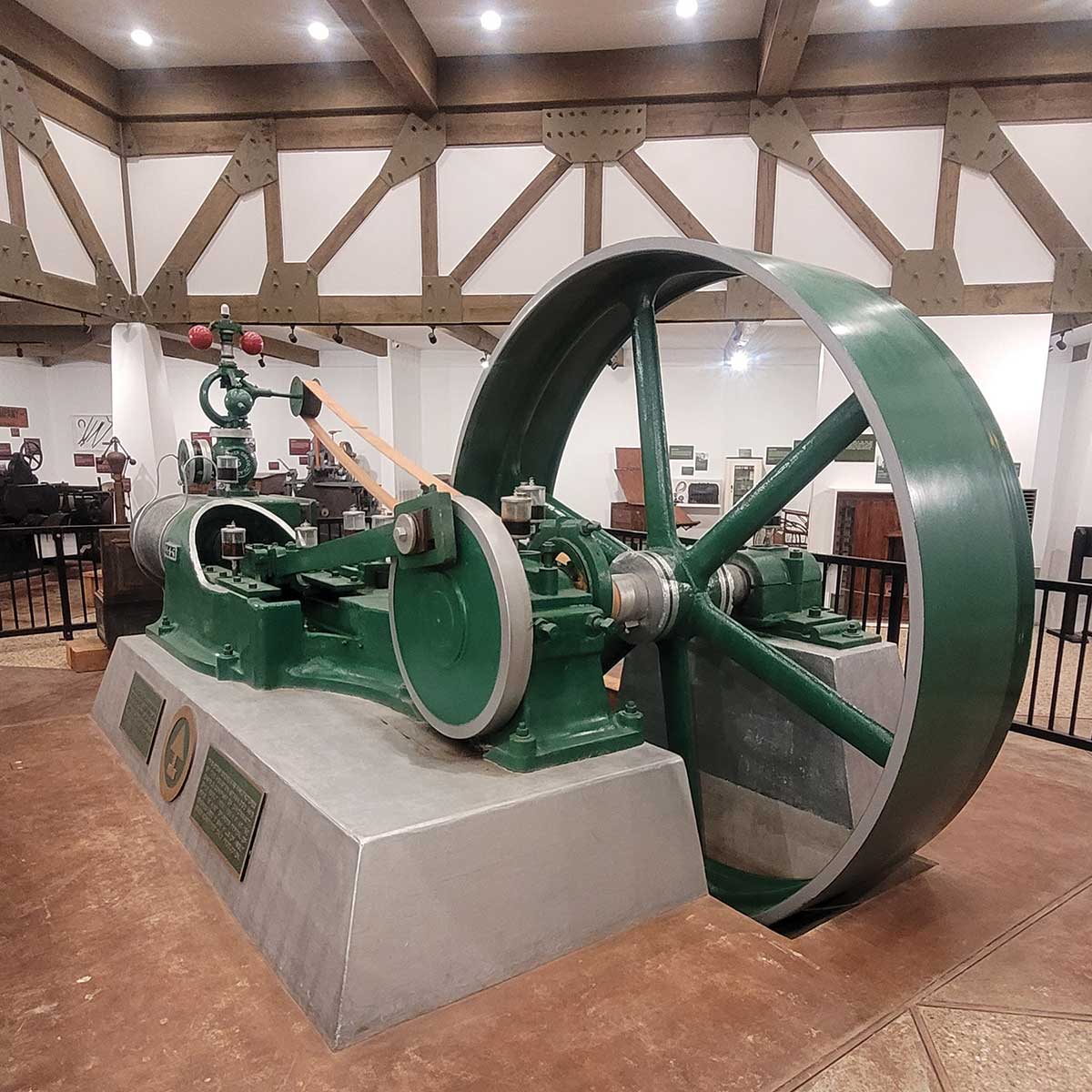Texas is home to plenty of museums, mostly ones that house rare art pieces, dinosaur bones, sculptures and precious stones. But East Texas has some unique museums that cater to different crowds—everyone from lovers of Gone With the Wind to those who want to learn about electric chairs, country music or the East Texas logging industry.
Let’s take a look at a few of the most unique museums in East Texas.
Texas Forestry Museum
Starting off in Lufkin, you’ll find a hidden gem in the Texas Forestry Museum. It’s home to the story of the forests of Texas and is enjoyed by nature lovers, arborists, history buffs and children of all ages. This museum explores the intriguing story of the industry that built East Texas.
As one of the largest institutions of its kind in the U.S., the Texas Forestry Museum stands as a destination suitable for all ages. It offers a profound and comprehensive exploration into the historical, contemporary and prospective facets of trees. The museum’s exhibits detail their cultivation, harvesting, transportation and processing, and the integral role they play in our daily lives.
The museum presents curated exhibits of notable significance, including Sawmill Town History, Paper Mill Room and Money Trees, as well as a logging train, fire-spotting tower and the Urban Wildscape Trail. The exhibits provide an enriching and educational experience for visitors.
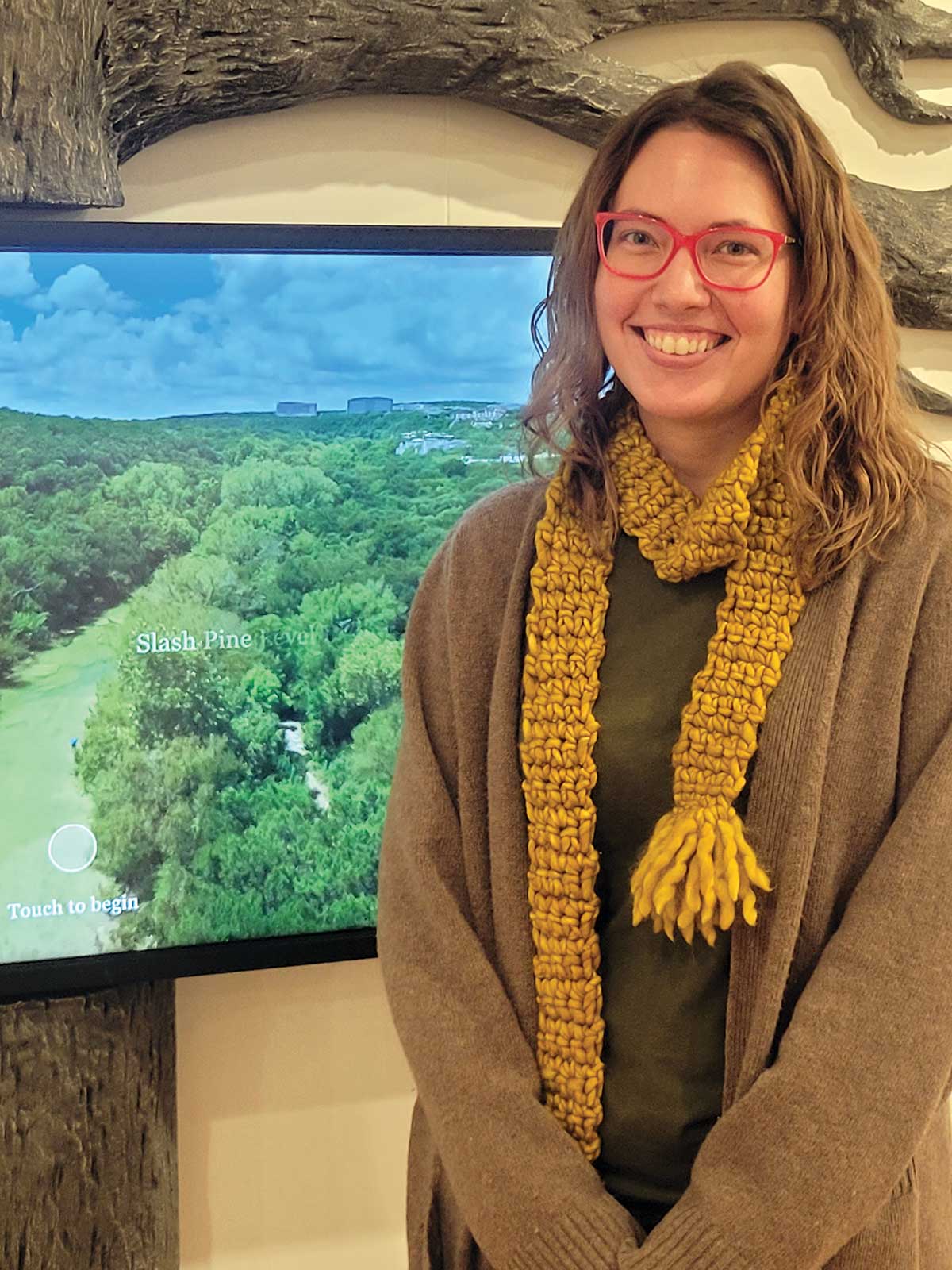
Kendall Gay is director of the Texas Forestry Museum.
“Something that really draws people is our children’s wing,” said Kendall Gay, museum director. “We have a whole wing of the museum that has a lot of interactive things for kids to do. We have a sawmill dress-up house where kids can dress up in overalls or little dresses and bonnets, and they can play in the kitchen with everything that’s made of wood. Outside of the little house, there’s a fishing pond and a garden and a little farm with animals. We also have a giant train table, which I think is really great for little kids.”
The museum attracts more than 25,000 visitors a year and has seen a 51% rise in visitors since the pandemic.
“It’s been nice because we’re not only an indoor attraction, but we have plenty to do outside as well,” Gay continued. “We have small trails, a fire tower and a real steam engine train. We also host scavenger hunts for kids and adults, and the museum can be rented out for events as well.”
Placing the museum in Lufkin wasn’t a difficult decision.
“We are quite blessed to be so close to all of the state and national forests,” Gay said. “You don’t have to drive that far. We’ve got the Davy Crockett National Forest if you’re headed out towards Crockett, the (nearby) Angelina National Forest and the Sam Houston National Forest towards Huntsville. And then there’s the Fairchild State Forest towards Jacksonville.
“Texas has nine state and national forests, and we’re quite close to most of them. Our trails offer a really nice opportunity for families to introduce their kids to nature in a very low-stakes situation. Our trails are circular and only about a quarter mile long, so if the kids get tired or restless, you pretty much can always see your car from the trails.”
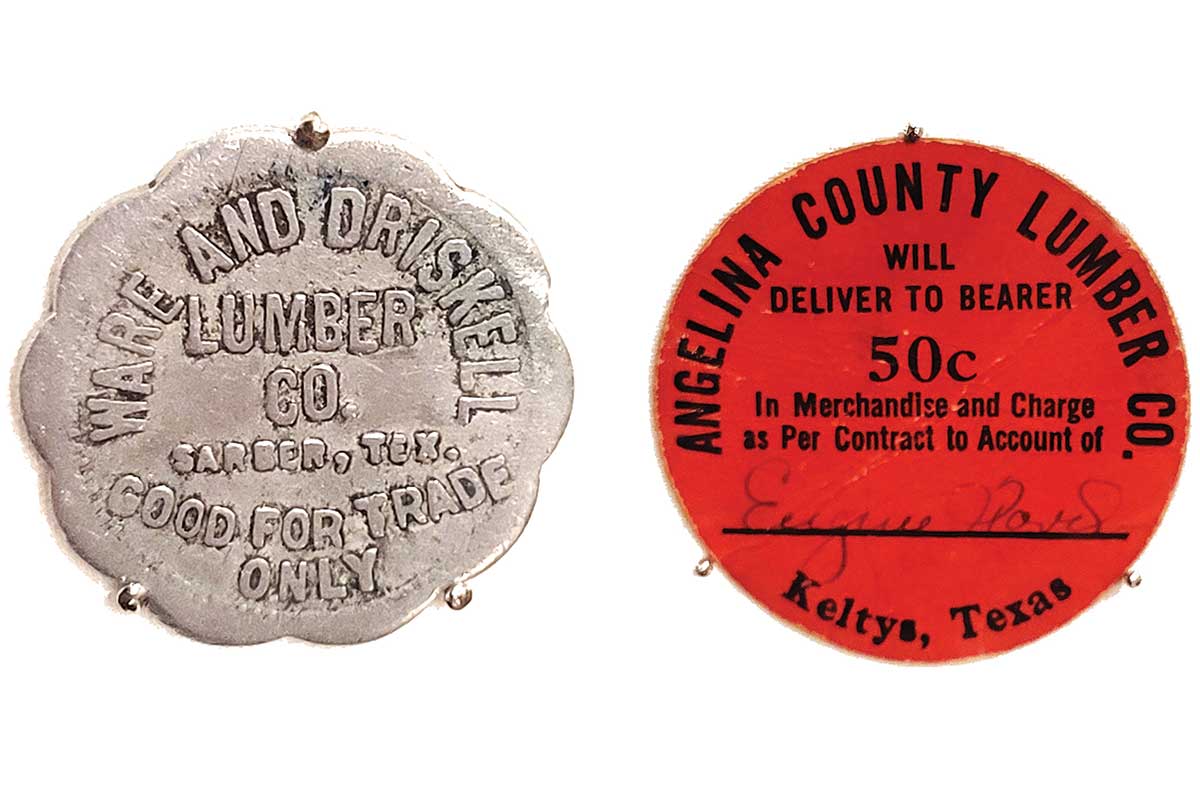
Workers who lived in the logging towns were paid in tokens that could only be used in company stores owned by their employer. This forced employees to work for the same company or else lose their earnings. These are actual tokens on display at the museum.
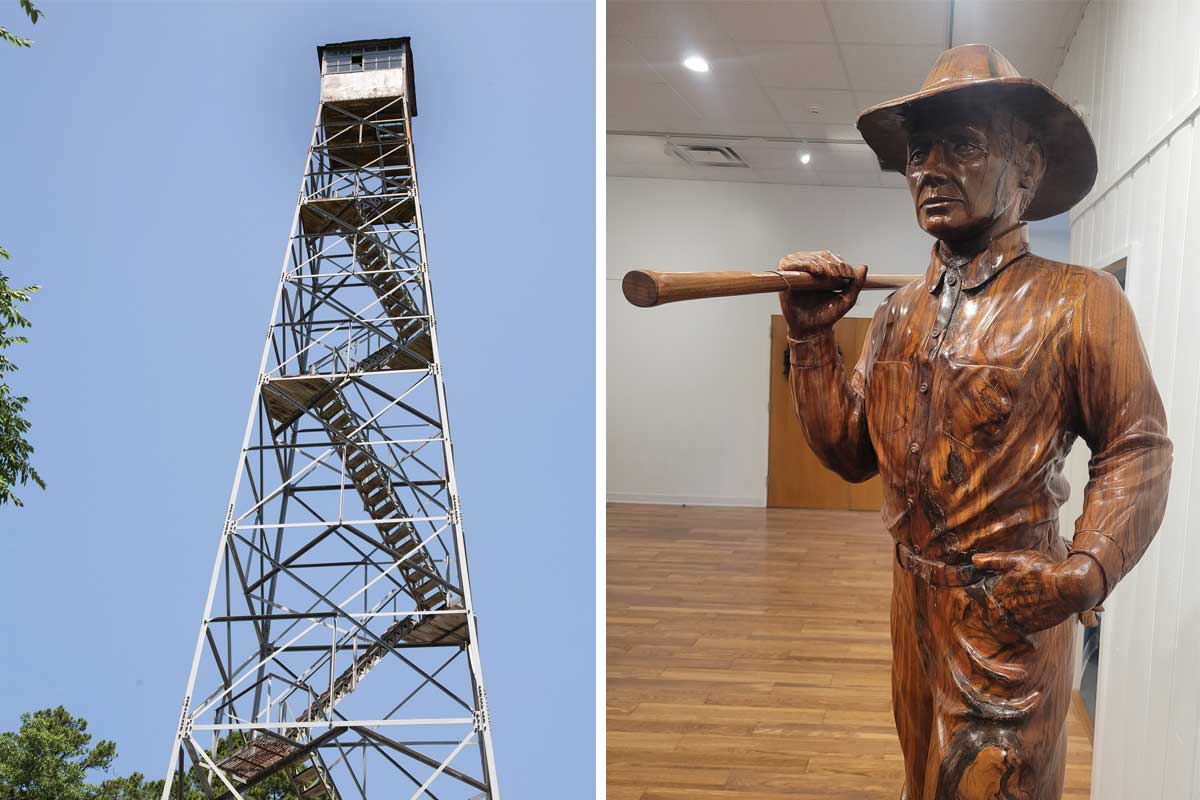
LEFT: An actual fire-spotting tower, used by forest rangers to spot forest fires, is on-site at the museum. RIGHT: Visitors to the Texas Forestry Museum are greeted at the entryway by a life-size statue of a Texas logger.
Texas Prison Museum
Approximately 70 miles to the southwest, the Texas Prison Museum in Huntsville holds historical significance as the location where the inaugural prison, known as the Huntsville Unit or informally as “the Walls,” was established in 1848 for the newly formed Texas prison system.
In 1847, the Texas Legislature authorized a commission to identify a suitable location to establish the prison system. With the influential Sam Houston, a key figure in Texas independence and a respected statesman, residing in Huntsville, the Texas Legislature designated and established Huntsville as the operational headquarters for the prison system, and so it remains today.
The Texas Prison Museum offers an intriguing glimpse into the lives of those incarcerated in Texas criminal justice facilities. The museum features a number of exhibits detailing the history of the Texas prison system, featuring a look inside the operations behind the fences and walls.
The museum is frequented by a diverse cross section of the public, ranging from grade school students on field trips to tourists from around the world. The museum draws about 36,000 guests annually.
The most popular exhibit continues to be Old Sparky, the decommissioned electric chair in which 361 prisoners were executed between 1924 and 1964. This legendary device, made by prison workers, was in storage at the Walls Unit’s “death house” before being donated to the museum.
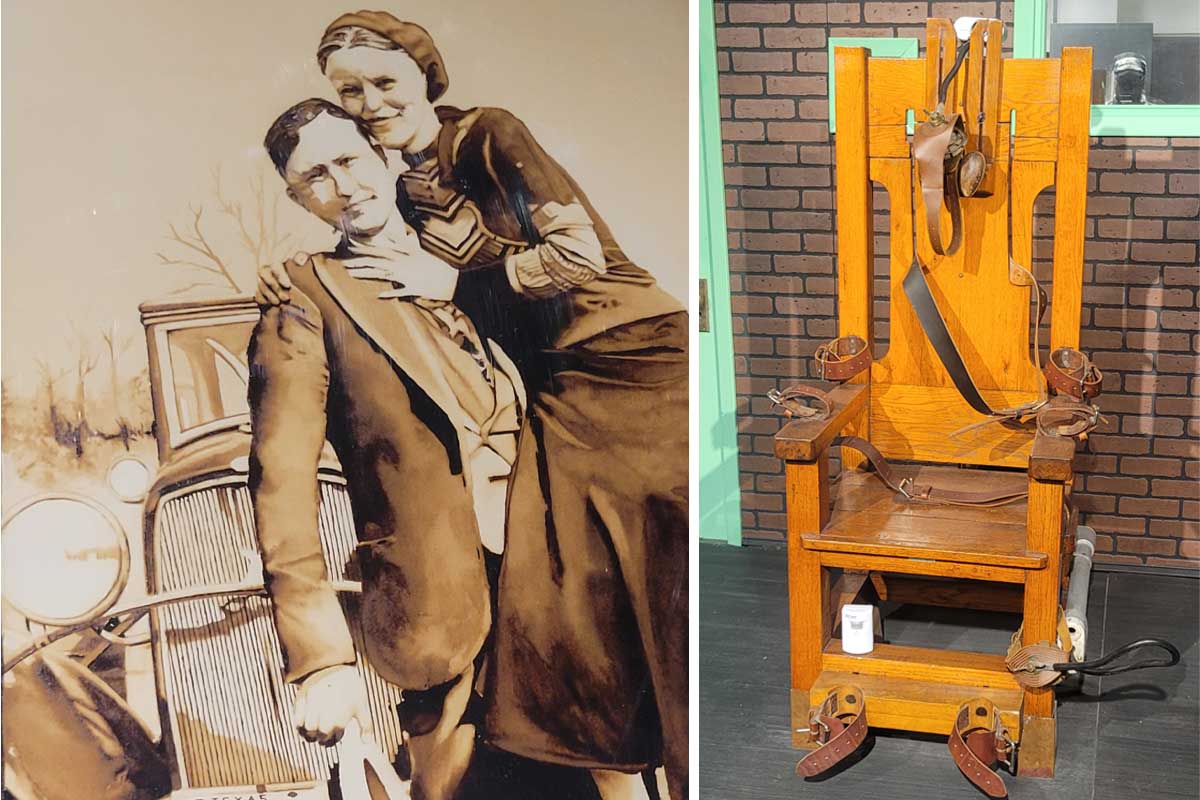
LEFT: This portrait of Bonnie and Clyde was crafted by inmate Ryan Jojola and created entirely from used coffee grounds. The piece won first place in the prison’s art show in 2018. RIGHT: The Texas Prison Museum houses Old Sparky, the actual electric chair where 361 prisoners were executed.
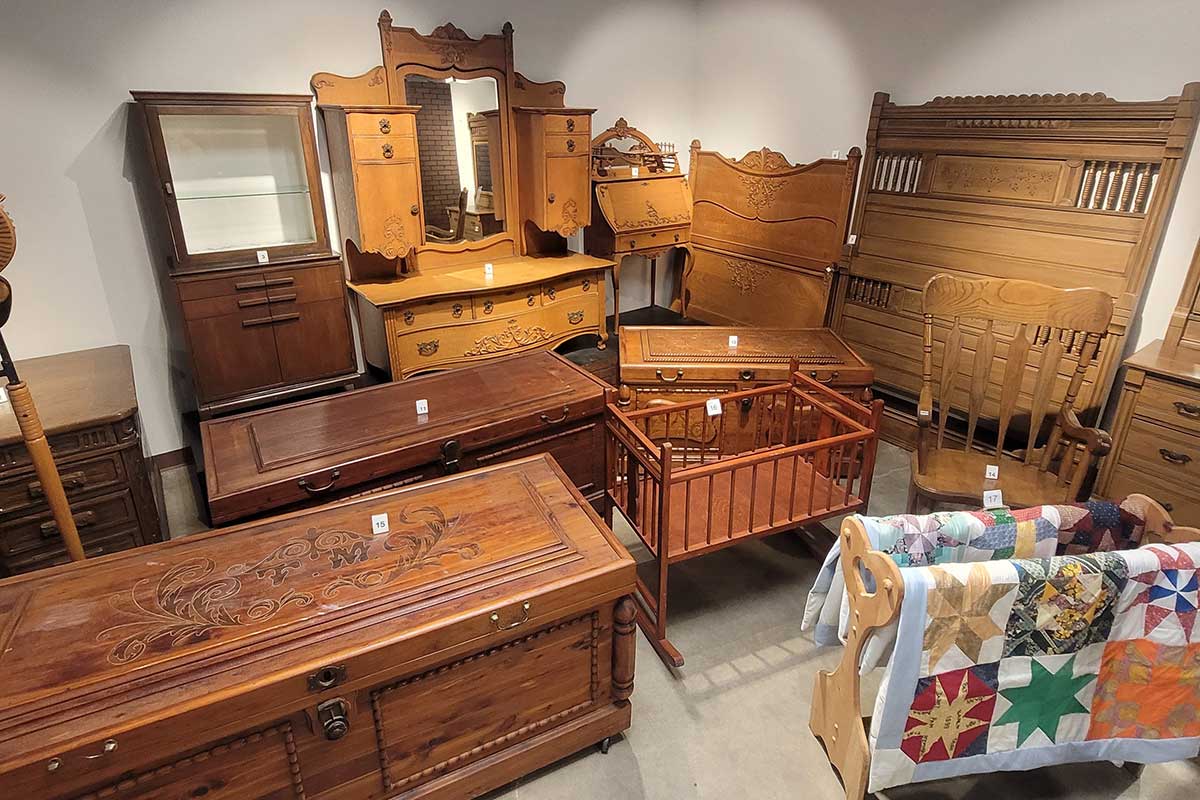
Furniture pieces made entirely by inmates, some of which have sold for thousands of dollars.
The museum also features interesting and unique items such as various guns used in escape attempts, typical prison cell layouts and even last meal requests from death row inmates. Perhaps one of the most intriguing requests came in 1934 from an inmate known as Big Jesse Mott. For his last meal, Mott ordered 3 pounds of steak, a ham, 12 fried eggs, 50 biscuits with “plenty of gravy,” and a half-gallon of ice cream. It was reported that Mott finished every bite before being executed February 9, 1934.
There is also an exhibit of infamous inmates who spent time in Texas prisons, including Clyde Barrow; Huddie Ledbetter, known professionally as Lead Belly, one of the founders of folk music; and David Crosby of Crosby, Stills & Nash.
Another popular exhibit shares the history of the Texas Prison Rodeo. During the Great Depression, this unconventional rodeo emerged in 1931 at the baseball park just beyond the formidable Walls Unit, typically used by the Walls Tigers baseball team. The visionary behind this endeavor was Lee Simmons, the general manager of the Texas prison system, who conceived it as a source of entertainment for employees and inmates alike.
Within a mere two years, the rodeo evolved from a local affair to a grand event, attracting 15,000 enthusiasts to Huntsville. Soon it claimed the title for drawing the largest crowds at a sporting event in Texas. For more than 50 years, the Texas Prison Rodeo captivated crowds every Sunday in October, surpassing 100,000 attendees in some years.
Some of the stars who performed at the rodeo included Johnny Cash, Ernest Tubb, Johnny Rodriguez, Willie Nelson, Dolly Parton, George Strait and Tom T. Hall. The popular Richard Pryor and Gene Wilder movie Stir Crazy featured the rodeo based on the Huntsville venue.
The grand finale of this captivating saga took place October 26, 1986, when the audience, including several hundred inmates, was regaled by the enchanting performances of the mother-daughter duo, the Judds. As the curtain fell, the chute gates were closed for the last time.

Virtually every kind of weapon you can imagine is on display at the museum, including 1920s-style Tommy guns and AK-47s.
While whispers of a revival persist, the Texas Prison Rodeo now resides as a cherished memory for those who witnessed or were a part of “the wildest show behind bars.”
There is also a gift shop at the museum, where visitors can purchase items made by inmates, including furniture, lamps, household items, original artwork and a collection of custom-made rocking horses. According to prison officials, some inmates make six-figure incomes from the sale of their artistry.
The Texas Country Music Hall of Fame/Tex Ritter Museum
In the heart of East Texas, Carthage to be exact, where the notes of country music echo through the vast landscapes, stands a shrine to the legends who shaped the genre. The Texas Country Music Hall of Fame/Tex Ritter Museum, a $2.5 million state-of-the-art facility, opened its doors in August 2002, welcoming over 30,000 country music enthusiasts to step back in time and relive the glorious moments of country music history.
The museum’s roots trace back to 1993, when it began as the Tex Ritter Museum, paying homage to Maurice Woodward “Tex” Ritter, who journeyed from the ranches of East Texas to the stages of Broadway and Hollywood.
Ritter was born near Carthage, where he attended grade school. His family moved to Nederland, where Tex honed his musical talents studying voice, trumpet and guitar as a teenager, graduating with honors from Beaumont’s South Park High School in 1922. His artistic pursuits led him to the University of Texas at Austin to study law, but destiny had a different plan for him.
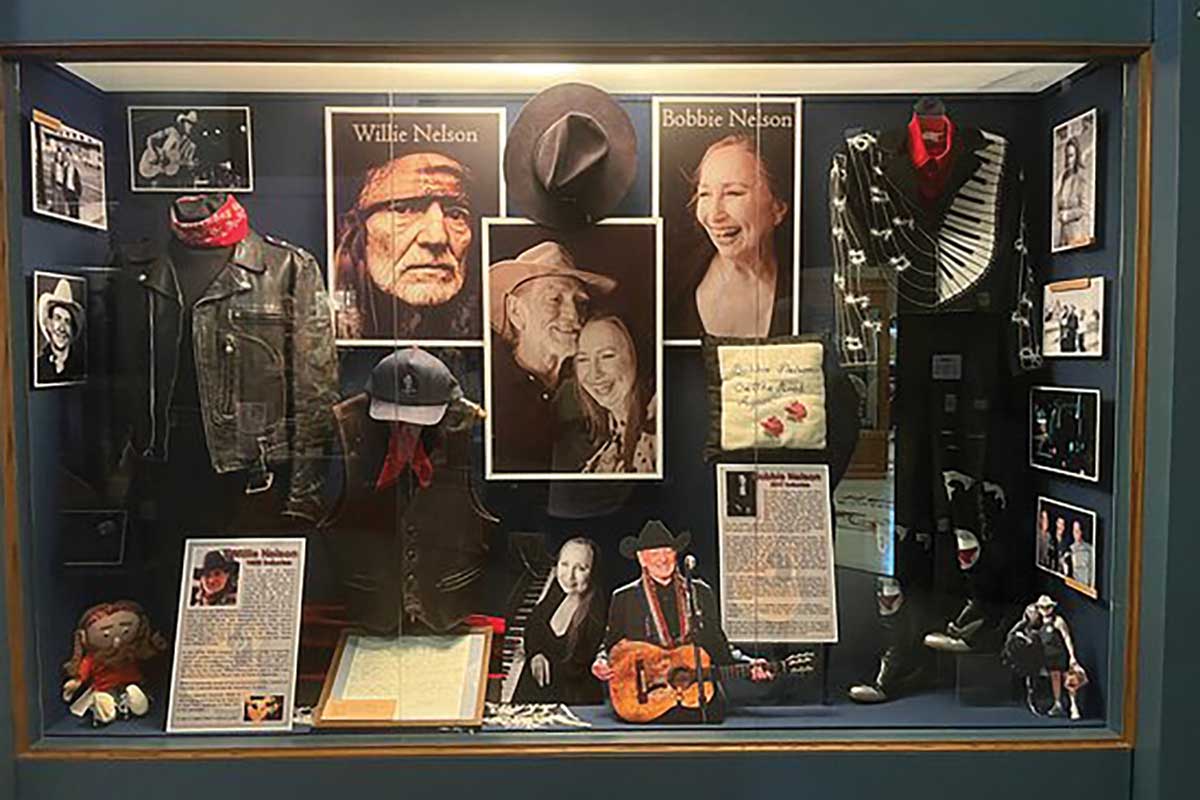
An entire display honoring legend Willie Nelson and his sister, Bobbie, is featured at the Tex Ritter Museum.
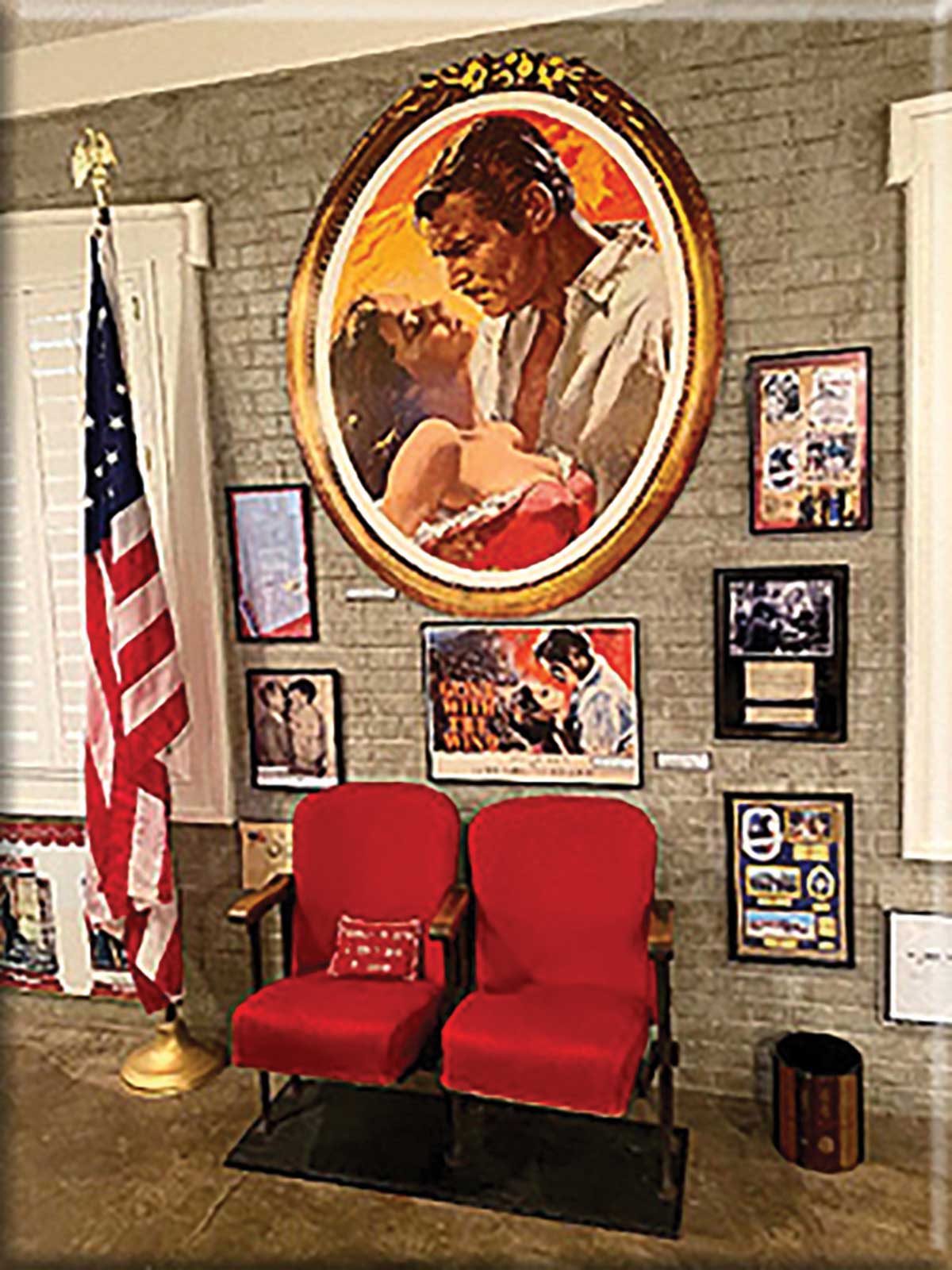
The Gone With the Wind Museum houses two theater seats from the Loew’s Grand Theatre in Atlanta, where the film premiered in 1939.
Ritter’s multifaceted career saw him as a Broadway star, a radio sensation on shows like The Lone Ranger and Tex Ritter’s Campfire, and a prominent figure in the Hollywood film industry. He starred in 78 films between 1936 and 1948, including winning an Oscar for his rendition of Do Not Forsake Me, the theme song from High Noon.
The Tex Ritter Museum expanded its horizons in August 2004, incorporating a significant display dedicated to Carthage native Jim Reeves, featuring the radio equipment from Reeves’ station, KGRI, in Henderson. This expansion reflects the museum’s commitment to preserving the rich tapestry of Texas-born country music legends, and thereafter it was renamed the Texas Country Music Hall of Fame/Tex Ritter Museum.
Today, the museum stands not only as a repository of memorabilia but as a living tribute to the enduring spirit of Texas musicians who have cemented their stature in the history of country music, including displays featuring Willie Nelson, Kris Kristofferson, Bob Wills, David Frizzell, the Texas Tenors, Buddy Holly, K.T. Oslin, Jeannie C. Riley and many others.
Visitors from every corner of the globe, including England, Denmark, Canada, India, Sri Lanka, the Netherlands and Australia, continue to make the pilgrimage to this musical sanctuary. As fans step through its doors, they embark on a journey through time, where the melodies of the past intertwine with the present, ensuring that the legends of Texas country music live on for generations to come.
Gone With the Wind Museum
Just 30 miles south of Atlanta, Texas, lies Jefferson, which contains a tribute to Atlanta (the city in Georgia), in the form of a larger-than-life shrine to everything Gone With the Wind.
Scarlett O’Hardy’s Gone With the Wind Museum, created by Jefferson’s Bobbie Hardy, features one of the world’s largest private collections of memorabilia from this epic story of the Old South.
The museum tells the complete story of Gone With the Wind with displays focusing on the Pulitzer Prize-winning novel written by Margaret Mitchell; the 1939 film produced by David O. Selznick starring Clark Gable and Vivien Leigh; and the modern-day collectibles that reveal just how pervasive the story’s characters and dialogue have become in everyday life.
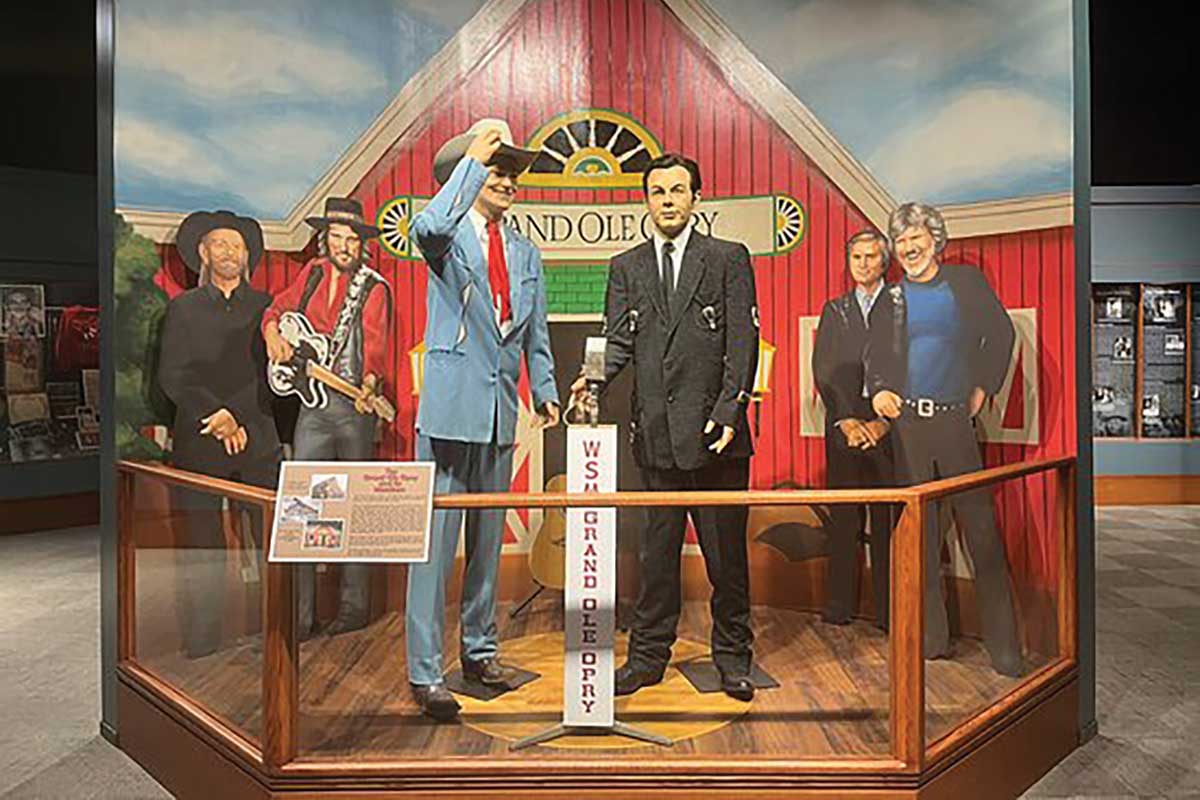
When Tex Ritter joined the Grand Ole Opry, he helped put Texas musicians on the map.
Movie posters from the U.S. and abroad, still photos, magazines, books, dolls, costume reproductions, jigsaw puzzles, drapery fabric, and figurines track the various rereleases of the film over the years and the continuing love moviegoers have for Gone With the Wind.
Among the museum’s standout features, and one of its most revered, is the replica of Scarlett’s iconic green drapery dress, a masterpiece designed by Walter
Plunkett and hailed by many as the most well-known costume in cinematic history.
The novel, published in 1936, has never been out of print. The museum is home to more than 100 foreign editions of the novel including copies from Bulgaria, Chile, Finland, France, Germany, Great Britain, Italy, Japan, Latvia, Lebanon, Poland, Romania, Russia, Spain, Turkey, Vietnam and Yugoslavia.
A pair of original seats from the Loew’s Grand Theatre in Atlanta, where the iconic movie had its world premiere, are also on display at the museum.
